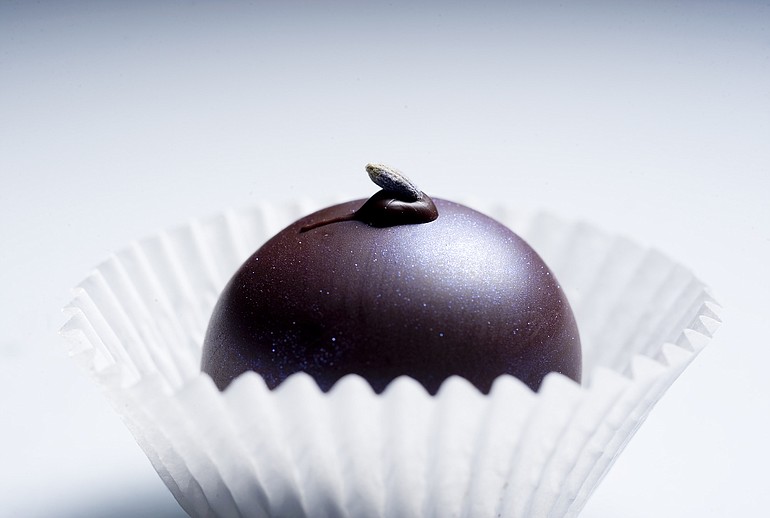Making chocolate confections at home might seem daunting, but bonbons, truffles and barks are all within the reach of most people, provided they have the right ingredients and can be patient throughout the various heating and cooling phases.
“The whole thing about chocolate is people seldom have success with it at home because they don’t go through the tempering process, which is absolutely necessary,” said Ian Titterton, head instructor and director of baking programs at Clark College in Vancouver.
Titterton, a former Moonstruck chocolatier, has been making the confections for about 40 years. He has recently crafted chocolate replicas of artifacts at the Clark County Historical Museum for its May 22 fundraiser.
Tempering is the heating of chocolate to its melting point — about 115 F — then cooling it to between 78 F and 80 F, the point at which the beta crystals in cocoa butter begin to set. Those crystals are what give chocolate its gloss, shine, snap, mouth feel and ability to contract from molds, Titterton said.
The chocolate cannot stay at the cooler temperature for more than a few minutes, or it will become too thick. It needs to be heated to its working temperature, between 88 F and 92 F, at which point it is considered “in temper.”
Precise temperatures are crucial, which makes a digital thermometer a good investment.
“You can be a degree or two out, and it can throw the whole thing off,” Titterton said.
If the tempered chocolate rises above 92 F, it melts, and the whole process must begin again.
If it falls below 88 F after having been tempered, reheat it to between 88 F and 92 F.
If the chocolate gets hotter than 140 F, it starts to lose its flavor.
A double boiler is an important tool in keeping the chocolate from burning. The water between the two pans prevents scorching by keeping the chocolate away from direct heat. But don’t let any of the water mix with the chocolate, or it will be ruined, Titterton said.
Understanding and adhering to tempering guidelines is half the battle; chocolate truffles and other treats are only as good as their ingredients.
Hershey’s and Nestlé Toll House chocolate chips used for baking cookies or brownies are not good choices for truffles, Titterton said. They don’t have a high enough cocoa or cocoa butter content and contain too much sugar, as well as additives such as guar gum that interfere with the melting process.
Titterton recommends using chips or bars from higher-end brands such as Lindt or Ghirardelli. For dark chocolate, choose products with between 58 percent and 70 percent cocoa content, he said.
Following these tips will greatly improve the chances of a positive chocolate-making experience, Titterton said. Give it a try with this recipe for Lavender Truffles, one of his favorites.
Ian Titterton’s Lavender Truffles
Yield: About 30 truffles.
4 ounces heavy cream
1 1/2 ounces unsalted butter
1/2 teaspoon dried lavender
10 ounces dark, bittersweet chocolate for the ganache, chopped into small pieces
1 pound dark, bittersweet chocolate for the shell if dipping, 1/2 pound if rolling, chopped into small pieces
Bring cream, butter and lavender almost to a boil, or the scalding point. Remove from heat and cover saucepan with plastic wrap for 20 minutes to infuse. Strain lavender from mixture, then reheat to a scald.
Pour lavender-infused cream and butter mixture over the 10 ounces of chocolate to make ganache, the core of the truffles. Stir until smooth.
Leave ganache in a sealed, shallow container unrefrigerated overnight to harden.
The next day, take a No. 100 scoop and create balls of ganache. Roll between hands to make round.
Set the balls aside for a couple of hours to harden.
Temper chocolate reserved for shells following the instructions listed in the story above. Roll or dip ganache balls in melted chocolate to coat.
Let truffles harden. Decorate with dot of chocolate and lavender flower if desired. Place in individual paper candy cups.



